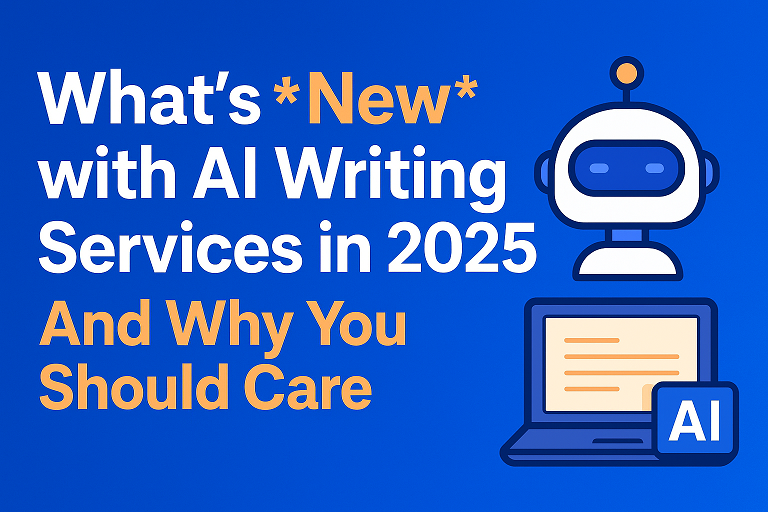New AI Innovations in Agriculture: Transforming the Future of Farming
Agriculture has always been at the heart of human civilization. From the earliest days of subsistence farming to the mechanized agriculture of the 20th century, innovation has consistently driven progress in this vital industry. Today, artificial intelligence (AI) is emerging as one of the most transformative technologies in agriculture, addressing challenges like food security, sustainability, labor shortages, and climate change.
This article explores how AI is revolutionizing agriculture, its applications, and the future it holds for global food production.
1. AI in Agriculture: An Overview
AI refers to the simulation of human intelligence in machines designed to perform tasks such as learning, reasoning, and problem-solving. In agriculture, AI leverages machine learning (ML), computer vision, robotics, and big data analytics to optimize farming practices. By integrating AI tools into their workflows, farmers can increase productivity, reduce waste, and make more informed decisions.
Key Drivers of AI in Agriculture
- Population Growth: The global population is expected to reach 9.7 billion by 2050, necessitating a 70% increase in food production.
- Resource Scarcity: Water, arable land, and labor are becoming scarce in many regions.
- Climate Change: Erratic weather patterns and natural disasters disrupt traditional farming methods.
- Sustainability: Pressure to reduce greenhouse gas emissions and conserve natural resources.
AI technologies provide solutions to these challenges, helping farmers adopt precision agriculture and sustainable practices.
2. Applications of AI in Agriculture
AI’s applications in agriculture span the entire supply chain, from soil preparation to market delivery. Let’s delve into its most prominent uses.
A. Precision Farming
Precision farming involves the use of AI and IoT (Internet of Things) devices to gather data and manage farms with pinpoint accuracy. Sensors collect real-time data on soil conditions, weather, and crop health, allowing farmers to:
- Optimize Inputs: Reduce the overuse of fertilizers, pesticides, and water.
- Enhance Yield: Apply resources exactly where needed, boosting productivity.
- Monitor Crops: Detect diseases, pest infestations, or nutrient deficiencies early.
AI Tools in Precision Farming
- Blue River Technology: Uses AI and computer vision to identify weeds and spray herbicide only where necessary, minimizing chemical use.
- Taranis: Provides high-resolution aerial imaging for precise crop monitoring.
B. Soil and Crop Monitoring
Healthy soil is fundamental for agriculture. AI systems analyze soil samples for nutrient levels, moisture content, and pH balance. They also monitor crops for signs of stress or disease using drones, cameras, and machine learning algorithms.
Examples
- CropX: An AI-driven platform that integrates soil data to optimize irrigation and fertilization.
- Plantix: A mobile app that identifies plant diseases from images and offers actionable advice.
C. Predictive Analytics
AI leverages historical data and machine learning to predict:
- Weather Conditions: Hyper-local forecasts help farmers plan planting, irrigation, and harvest schedules.
- Pest Outbreaks: Early warnings about pest activity can prevent crop loss.
- Market Trends: Price forecasting helps farmers make informed selling decisions.
Tools in Predictive Analytics
- The Climate Corporation: Combines weather data with agronomic insights to optimize crop management.
- aWhere: Provides location-specific weather analytics for smallholder farmers.
D. Automated Machinery and Robotics
AI-powered robots are transforming labor-intensive tasks such as planting, weeding, harvesting, and sorting. These machines are faster, more accurate, and operate 24/7 without fatigue.
Innovations in Agri-Robotics
- Harvest CROO Robotics: A strawberry-picking robot capable of harvesting thousands of berries daily.
- Naïo Technologies: Autonomous robots for weeding and hoeing fields.
- John Deere’s See & Spray: Combines robotics and AI to precisely apply herbicides.
E. Livestock Management
AI is also making waves in animal husbandry. Farmers use AI to monitor the health, behavior, and productivity of livestock.
AI Applications in Livestock
- Facial Recognition: Identify individual animals and monitor their well-being.
- Disease Detection: Sensors and cameras detect early signs of illness, allowing timely intervention.
- Feed Optimization: AI systems recommend the ideal feed mix for optimal growth.
Notable Solutions
- Cainthus: Uses computer vision to monitor dairy herds and optimize milk production.
- FlockWatch: Tracks poultry performance to improve yield and animal welfare.
F. Supply Chain Optimization
AI improves efficiency across the agricultural supply chain, from logistics to market access. Predictive analytics optimize transportation routes, minimize spoilage, and ensure products reach consumers quickly.
Case Studies
- AgriDigital: A blockchain-based platform that uses AI for inventory management and supply chain traceability.
- IBM Food Trust: Combines AI and blockchain to enhance food safety and traceability.
3. Benefits of AI in Agriculture
AI offers numerous advantages to farmers, consumers, and the environment.
A. Increased Efficiency
- Automates repetitive tasks.
- Reduces resource consumption.
- Maximizes crop yields.
B. Cost Savings
AI tools reduce the need for labor, fertilizers, and pesticides, lowering production costs.
C. Environmental Sustainability
- Minimizes chemical runoff into water bodies.
- Promotes regenerative agriculture by optimizing resource use.
D. Improved Food Security
AI enables higher yields and better resource management, ensuring sufficient food supply for growing populations.
4. Challenges and Ethical Considerations
Despite its potential, AI adoption in agriculture faces several hurdles:
A. High Costs
Small-scale farmers in developing countries often struggle to afford AI technologies.
B. Data Privacy
Farmers’ data must be protected against misuse or monopolization by large corporations.
C. Digital Divide
Limited internet access and technical expertise hinder AI adoption in rural areas.
D. Ethical Concerns
Automation could lead to job losses in agricultural labor, raising social and economic issues.
5. Future Trends in AI and Agriculture
The future of AI in agriculture looks promising, with new developments on the horizon:
A. Edge AI
Processing data locally on devices (edge computing) will make AI tools more accessible to remote farms.
B. AI-Powered Genetic Engineering
AI will accelerate the development of climate-resilient crop varieties through gene editing.
C. Agri-Drones
Drones equipped with AI will become more sophisticated, enabling autonomous farm monitoring and intervention.
D. Smart Greenhouses
AI-powered greenhouses will optimize growing conditions and extend the growing season.
E. Carbon Farming
AI will support carbon credit programs by monitoring and verifying regenerative farming practices.
6. Case Studies of AI in Agriculture
A. India: Smart Farming for Smallholders
In India, startups like Farmers Fresh Zone and Gramophone use AI to provide smallholders with market intelligence and weather forecasts, boosting their incomes.
B. United States: Large-Scale Adoption
U.S. farms have adopted AI for autonomous tractors, robotic milkers, and precision irrigation systems.
C. Africa: AI for Food Security
AI projects like Hello Tractor provide shared access to machinery for African farmers, promoting sustainable farming practices.
7. Conclusion
AI is a game-changer for agriculture, offering innovative solutions to age-old challenges. While barriers to adoption remain, technological advancements and supportive policies can unlock AI’s full potential. As we look to the future, AI-driven agriculture promises not only to feed a growing population but also to do so sustainably, ensuring the health of our planet for generations to come.
This transformative journey is just beginning, but it’s already clear that the farm of the future will be as much about silicon as soil. AI is not replacing farmers; it’s empowering them to achieve more with less. Together, these advancements herald a new era in agriculture—one where innovation and tradition work hand in hand to secure our global food supply.




